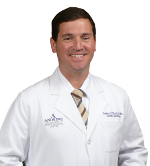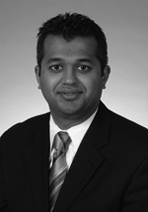Seven physicians discuss the technology advancements that allow surgeons to bring orthopedics and sports medicine into surgery centers and where these innovations are headed in the future.
Edwin R. Cadet, MD, Raleigh Orthopaedic Clinic (Rex Healthcare): The advances we have seen in arthroscopic instrumentation and more importantly, surgical technique and training, clearly allow us to perform procedures that historically were performed using open techniques to outpatient, same-day procedures with smaller incisions and less morbidity to the patient. I would personally say the management of hip labral tears and femoroacetabular impingement is a prime example of this.
instrumentation and more importantly, surgical technique and training, clearly allow us to perform procedures that historically were performed using open techniques to outpatient, same-day procedures with smaller incisions and less morbidity to the patient. I would personally say the management of hip labral tears and femoroacetabular impingement is a prime example of this.
Just a little over a decade ago, the majority of cases that required surgical management for hip labral tears and femoroacetabular impingement required large incisions, open surgical dislocation of the hip, prolonged hospitalization, pain and recovery for the patient. With the advances of surgical technique and specific instrumentation designed for hip arthroscopy, we are able to perform these complex procedures with only two or three small incisions with the patient going home hours after their surgery.
Such advances improve postoperative pain, less hospitalizations, quicker return to activity and sports and helps to lower healthcare costs. These procedures do come with a large learning curve and patients should educate themselves on whom the experts are in this particular field to perform such procedures to improve their chances of a successful result.
 Derek T. Dee, MD, DISC Sports & Spine Center: Among the numerous innovations are regional anesthesia, nerve blocks and better control of bleeding and swelling with PRP and other biologics. There's also greater efficiency with surgical procedures to minimize dissection and incisions, thereby decreasing swelling and pain and allowing for quicker recovery.
Derek T. Dee, MD, DISC Sports & Spine Center: Among the numerous innovations are regional anesthesia, nerve blocks and better control of bleeding and swelling with PRP and other biologics. There's also greater efficiency with surgical procedures to minimize dissection and incisions, thereby decreasing swelling and pain and allowing for quicker recovery.
Scott Gillogly, MD, Atlanta Sports Medicine: Minimally invasive surgery, such as arthroscopy of the knees, shoulders, elbows and ankles, is first and foremost the technology that's been around since the mid-80s and now has become the standard of care. We also have less postoperative pain and quicker recovery, therefore patients can undergo procedures in the ASC. The use of regional anesthesia, femoral blocks, sciatic blocks and interscalene blocks provide good pain relieve to last overnight, allowing for greater complexity of procedures done safely in the ASC
shoulders, elbows and ankles, is first and foremost the technology that's been around since the mid-80s and now has become the standard of care. We also have less postoperative pain and quicker recovery, therefore patients can undergo procedures in the ASC. The use of regional anesthesia, femoral blocks, sciatic blocks and interscalene blocks provide good pain relieve to last overnight, allowing for greater complexity of procedures done safely in the ASC
There is a trend toward faster recover and immediate motion and weight bearing to make these procedures conducive to the active sports medicine population people who want to get better and push themselves. It fits with the general philosophy of the patient type.
In the future I think we'll see further refinement of arthroscopic procedures and second- and third-generation equipment to simplify the procedures. The refinement of techniques and response of medical device companies to make devices that are more consistent and improve results will be important. We will push the envelope to do better things safely and build on the principles and foundation of the procedures that have been done over the past 25 years.
From a sports medicine standpoint, orthopedics is moving toward enhancements for cellular repair of cartilage defects of the knee. We'll see things like platelet-rich plasma incorporated into certain procedures, but it doesn't solve all our issues. Biologics will develop in the future and be conducive to the ASC.
 Manish Gupta, MD, Head of Sports and Orthopedic Center in Boca Raton, Fla.: Innovations in equipment being more compact and transferable allow for more procedures to be done in ASCs. Also advancement in anesthesia and pain management plays a role too. The ability for patients to get outpatient nursing care also helps.
Manish Gupta, MD, Head of Sports and Orthopedic Center in Boca Raton, Fla.: Innovations in equipment being more compact and transferable allow for more procedures to be done in ASCs. Also advancement in anesthesia and pain management plays a role too. The ability for patients to get outpatient nursing care also helps.
There is also innovation in how we've expanded our ability to treat patients. Sometimes patients don't need extensive procedures, and minimal orthobiologic treatment can be done. We have new camera technology that is more versatile. Our instrumentation has caught up to the ability to view within the body 360 degrees so we are able to get more creative with our procedures. Robotics and computer assistance are both things that will one day be a main stay at the ASCs for increased accuracy during minimally invasive procedures.
Joshua Hackel, MD, Andrews Institute for Orthopaedics & Sports Medicine, Gulf Breeze, Fla.: Advancements in minimally invasive procedures are particularly ideal for outpatient surgery centers since these procedures require less advanced postoperative management.
minimally invasive procedures are particularly ideal for outpatient surgery centers since these procedures require less advanced postoperative management.
Previously, complex surgeries would be inappropriate; however now with technological advances these same procedures can be managed in the outpatient surgery center. Ultrasound guided regional anesthesia has improved postoperative pain control allowing simple and complex procedures to take place in the ASC that formerly required inpatient pain management.
Selene Parekh, MD, North Carolina Orthopaedic Clinic: One of the biggest things that has happened is the evolution of regional anesthesia. There are lots of different ways we can now block or numb nerves that are coming from the spine whether you are numbing them at the shoulder, elbow, hip, knee or ankle. You can have patients go home the same day and they feel pain relief from the injection. This has become revolutionary and there are some new products on the market making their way into ambulatory care centers that will revolutionize surgery in general.
evolution of regional anesthesia. There are lots of different ways we can now block or numb nerves that are coming from the spine whether you are numbing them at the shoulder, elbow, hip, knee or ankle. You can have patients go home the same day and they feel pain relief from the injection. This has become revolutionary and there are some new products on the market making their way into ambulatory care centers that will revolutionize surgery in general.
 Matthew Shapiro, MD, Slocum Center for Orthopedics & Sports Medicine, Eugene, Ore.: Recent advancements in technology have provided us with the opportunity to do procedures traditionally performed in hospitals in our ASC. Our surgeons are performing open shoulder surgery, partial knee replacement and multi-ligament operations in the ASC. I attribute this to our tremendous anesthesiologists who are able to perform nerve blocks and very light anesthesia, allowing our patients to go home the same day, often just an hour after surgery. Of course, the huge breakthroughs in surgery technology that allow us to perform surgeries with smaller incisions also contribute to our ability to perform more complicated procedures in the ASC.
Matthew Shapiro, MD, Slocum Center for Orthopedics & Sports Medicine, Eugene, Ore.: Recent advancements in technology have provided us with the opportunity to do procedures traditionally performed in hospitals in our ASC. Our surgeons are performing open shoulder surgery, partial knee replacement and multi-ligament operations in the ASC. I attribute this to our tremendous anesthesiologists who are able to perform nerve blocks and very light anesthesia, allowing our patients to go home the same day, often just an hour after surgery. Of course, the huge breakthroughs in surgery technology that allow us to perform surgeries with smaller incisions also contribute to our ability to perform more complicated procedures in the ASC.
More Articles on Surgery Centers:
4 Things to Know About Leading a Joint Venture Surgery Center
10 Hospitals & Health Systems Recently Opening or Planning Surgery Centers
3 Things Every ASC Brand Should Have
Edwin R. Cadet, MD, Raleigh Orthopaedic Clinic (Rex Healthcare): The advances we have seen in arthroscopic
 instrumentation and more importantly, surgical technique and training, clearly allow us to perform procedures that historically were performed using open techniques to outpatient, same-day procedures with smaller incisions and less morbidity to the patient. I would personally say the management of hip labral tears and femoroacetabular impingement is a prime example of this.
instrumentation and more importantly, surgical technique and training, clearly allow us to perform procedures that historically were performed using open techniques to outpatient, same-day procedures with smaller incisions and less morbidity to the patient. I would personally say the management of hip labral tears and femoroacetabular impingement is a prime example of this. Just a little over a decade ago, the majority of cases that required surgical management for hip labral tears and femoroacetabular impingement required large incisions, open surgical dislocation of the hip, prolonged hospitalization, pain and recovery for the patient. With the advances of surgical technique and specific instrumentation designed for hip arthroscopy, we are able to perform these complex procedures with only two or three small incisions with the patient going home hours after their surgery.
Such advances improve postoperative pain, less hospitalizations, quicker return to activity and sports and helps to lower healthcare costs. These procedures do come with a large learning curve and patients should educate themselves on whom the experts are in this particular field to perform such procedures to improve their chances of a successful result.
 Derek T. Dee, MD, DISC Sports & Spine Center: Among the numerous innovations are regional anesthesia, nerve blocks and better control of bleeding and swelling with PRP and other biologics. There's also greater efficiency with surgical procedures to minimize dissection and incisions, thereby decreasing swelling and pain and allowing for quicker recovery.
Derek T. Dee, MD, DISC Sports & Spine Center: Among the numerous innovations are regional anesthesia, nerve blocks and better control of bleeding and swelling with PRP and other biologics. There's also greater efficiency with surgical procedures to minimize dissection and incisions, thereby decreasing swelling and pain and allowing for quicker recovery.Scott Gillogly, MD, Atlanta Sports Medicine: Minimally invasive surgery, such as arthroscopy of the knees,
 shoulders, elbows and ankles, is first and foremost the technology that's been around since the mid-80s and now has become the standard of care. We also have less postoperative pain and quicker recovery, therefore patients can undergo procedures in the ASC. The use of regional anesthesia, femoral blocks, sciatic blocks and interscalene blocks provide good pain relieve to last overnight, allowing for greater complexity of procedures done safely in the ASC
shoulders, elbows and ankles, is first and foremost the technology that's been around since the mid-80s and now has become the standard of care. We also have less postoperative pain and quicker recovery, therefore patients can undergo procedures in the ASC. The use of regional anesthesia, femoral blocks, sciatic blocks and interscalene blocks provide good pain relieve to last overnight, allowing for greater complexity of procedures done safely in the ASCThere is a trend toward faster recover and immediate motion and weight bearing to make these procedures conducive to the active sports medicine population people who want to get better and push themselves. It fits with the general philosophy of the patient type.
In the future I think we'll see further refinement of arthroscopic procedures and second- and third-generation equipment to simplify the procedures. The refinement of techniques and response of medical device companies to make devices that are more consistent and improve results will be important. We will push the envelope to do better things safely and build on the principles and foundation of the procedures that have been done over the past 25 years.
From a sports medicine standpoint, orthopedics is moving toward enhancements for cellular repair of cartilage defects of the knee. We'll see things like platelet-rich plasma incorporated into certain procedures, but it doesn't solve all our issues. Biologics will develop in the future and be conducive to the ASC.
 Manish Gupta, MD, Head of Sports and Orthopedic Center in Boca Raton, Fla.: Innovations in equipment being more compact and transferable allow for more procedures to be done in ASCs. Also advancement in anesthesia and pain management plays a role too. The ability for patients to get outpatient nursing care also helps.
Manish Gupta, MD, Head of Sports and Orthopedic Center in Boca Raton, Fla.: Innovations in equipment being more compact and transferable allow for more procedures to be done in ASCs. Also advancement in anesthesia and pain management plays a role too. The ability for patients to get outpatient nursing care also helps.There is also innovation in how we've expanded our ability to treat patients. Sometimes patients don't need extensive procedures, and minimal orthobiologic treatment can be done. We have new camera technology that is more versatile. Our instrumentation has caught up to the ability to view within the body 360 degrees so we are able to get more creative with our procedures. Robotics and computer assistance are both things that will one day be a main stay at the ASCs for increased accuracy during minimally invasive procedures.
Joshua Hackel, MD, Andrews Institute for Orthopaedics & Sports Medicine, Gulf Breeze, Fla.: Advancements in
 minimally invasive procedures are particularly ideal for outpatient surgery centers since these procedures require less advanced postoperative management.
minimally invasive procedures are particularly ideal for outpatient surgery centers since these procedures require less advanced postoperative management. Previously, complex surgeries would be inappropriate; however now with technological advances these same procedures can be managed in the outpatient surgery center. Ultrasound guided regional anesthesia has improved postoperative pain control allowing simple and complex procedures to take place in the ASC that formerly required inpatient pain management.
Selene Parekh, MD, North Carolina Orthopaedic Clinic: One of the biggest things that has happened is the
 evolution of regional anesthesia. There are lots of different ways we can now block or numb nerves that are coming from the spine whether you are numbing them at the shoulder, elbow, hip, knee or ankle. You can have patients go home the same day and they feel pain relief from the injection. This has become revolutionary and there are some new products on the market making their way into ambulatory care centers that will revolutionize surgery in general.
evolution of regional anesthesia. There are lots of different ways we can now block or numb nerves that are coming from the spine whether you are numbing them at the shoulder, elbow, hip, knee or ankle. You can have patients go home the same day and they feel pain relief from the injection. This has become revolutionary and there are some new products on the market making their way into ambulatory care centers that will revolutionize surgery in general. Matthew Shapiro, MD, Slocum Center for Orthopedics & Sports Medicine, Eugene, Ore.: Recent advancements in technology have provided us with the opportunity to do procedures traditionally performed in hospitals in our ASC. Our surgeons are performing open shoulder surgery, partial knee replacement and multi-ligament operations in the ASC. I attribute this to our tremendous anesthesiologists who are able to perform nerve blocks and very light anesthesia, allowing our patients to go home the same day, often just an hour after surgery. Of course, the huge breakthroughs in surgery technology that allow us to perform surgeries with smaller incisions also contribute to our ability to perform more complicated procedures in the ASC.
Matthew Shapiro, MD, Slocum Center for Orthopedics & Sports Medicine, Eugene, Ore.: Recent advancements in technology have provided us with the opportunity to do procedures traditionally performed in hospitals in our ASC. Our surgeons are performing open shoulder surgery, partial knee replacement and multi-ligament operations in the ASC. I attribute this to our tremendous anesthesiologists who are able to perform nerve blocks and very light anesthesia, allowing our patients to go home the same day, often just an hour after surgery. Of course, the huge breakthroughs in surgery technology that allow us to perform surgeries with smaller incisions also contribute to our ability to perform more complicated procedures in the ASC.More Articles on Surgery Centers:
4 Things to Know About Leading a Joint Venture Surgery Center
10 Hospitals & Health Systems Recently Opening or Planning Surgery Centers
3 Things Every ASC Brand Should Have

